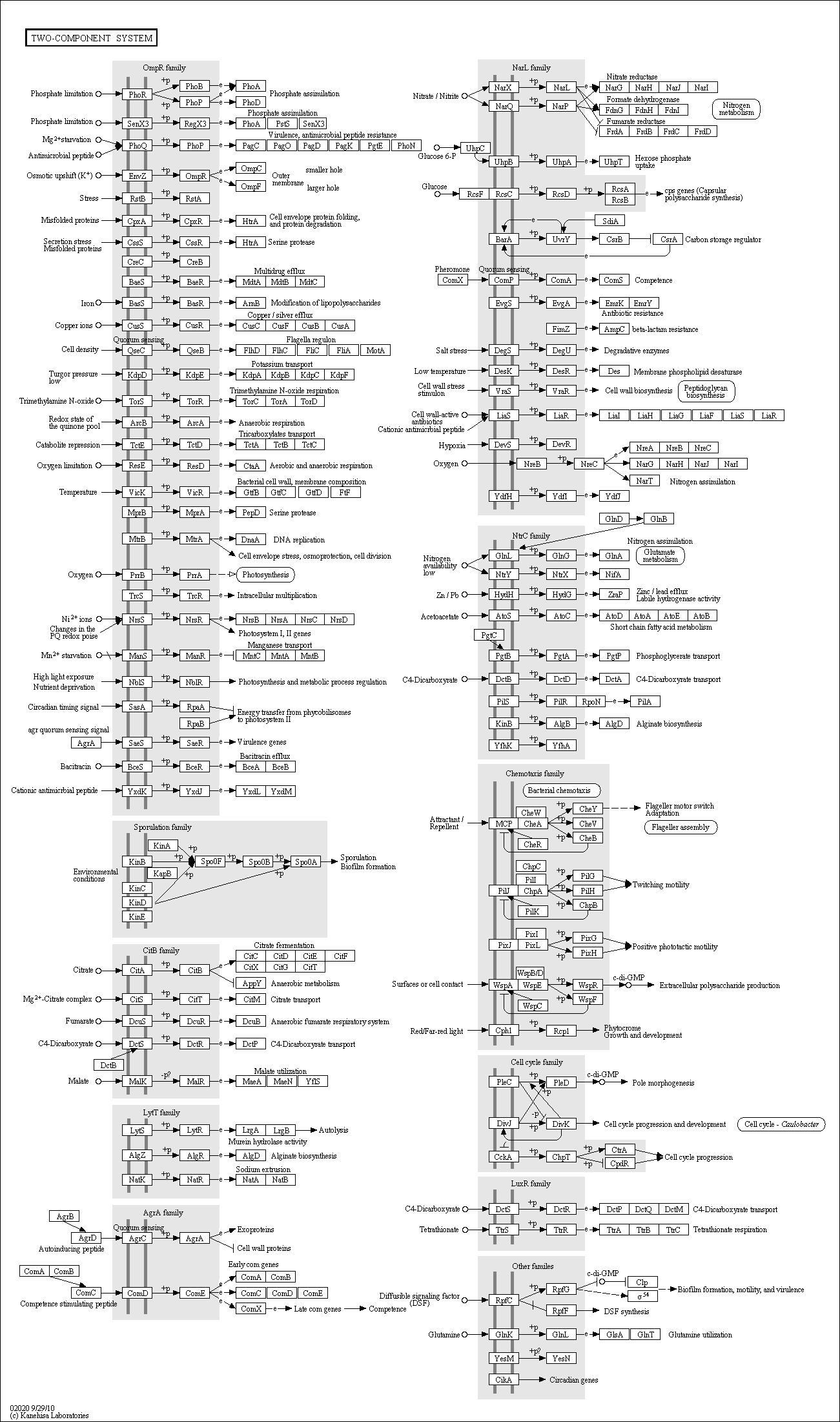Two-Component System
Description: Two-component signal transduction systems enable bacteria to sense, respond, and adapt to changes in their environment or in their intracellular state. Each two-component system consists of a sensor protein-histidine kinase (HK) and a response regulator (RR). In the prototypical two-component pathway, the sensor HK phosphorylates its own conserved His residue in response to a signal(s) in the environment. Subsequently, the phosphoryl group of HK is transferred onto a specific Asp residue on the RR. The activated RR can then effect changes in cellular physiology, often by regulating gene expression. Two-component pathways thus often enable cells to sense and respond to stimuli by inducing changes in transcription. Source: KEGG (eco02020)

Related BMRB Molecules
- Citrate
- Fumaric Acid
- D-Glucose
- D-Glucose-6-Phosphate
- L-Glutamic Acid
- L-Glutamine
- Malic Acid
- Trimethylamine N-oxide
For complete information about pathway, see KEGG [map02020]
